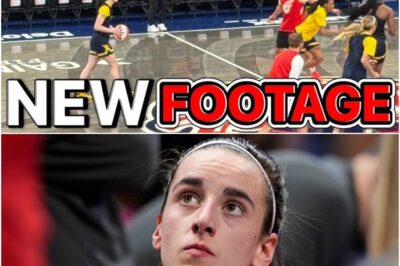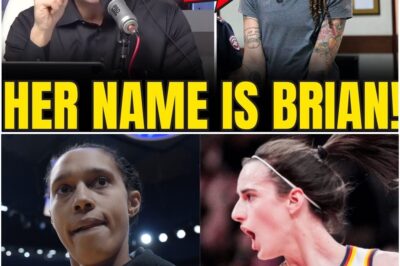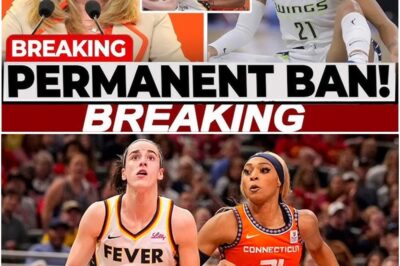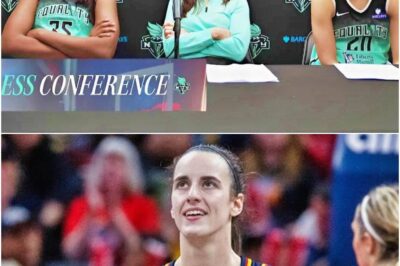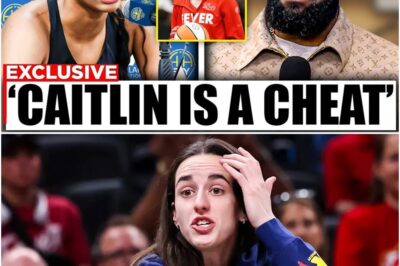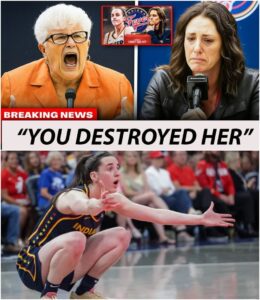
There are moments in sports when silence says everything—and then there are moments when silence finally breaks. For the Indiana Fever, that moment came this week, not from a player, not from the media, but from inside the house.
Lynn Dunn, longtime architect of the Fever’s past success and current senior adviser, did something that sent shockwaves through the WNBA: she publicly criticized head coach Stephanie White’s offensive system. And while she never mentioned names, everyone knew exactly who she was talking about—and exactly who it was meant to protect.
Her name is Caitlin Clark.
And for Fever fans, the gloves are officially off.
“You Can’t Expect Execution Without Repetition”
It was just a post. A single sentence dropped onto social media that, at first glance, looked like harmless coaching philosophy.
“You can’t expect players to execute things you don’t drill in practice.”
But context is everything.
The post came just hours after yet another game in which Indiana’s offense stagnated. Another night where Caitlin Clark stood in the corner as a motion offense unfolded without urgency or direction. Another game where the Fever led—until they didn’t. And another night where Clark, the most gifted offensive talent in women’s basketball, was reduced to a passive participant in a system that refuses to adapt to her strengths.
Dunn’s post was no accident. It was a siren.
The System That’s Failing the Star
From the moment she stepped onto a WNBA court, Caitlin Clark didn’t just raise expectations—she redefined them. Her vision, her range, her command of tempo, and her ability to bend defenses to her will are what turned Iowa into a ratings juggernaut. What made her the most talked-about rookie since Diana Taurasi. What made her, for all intents and purposes, “the league.”
And yet here she is in Indiana—being used like a decoy in a high school offense.
Instead of letting her run pick-and-rolls, manipulate defenses, and create the chaos she’s known for, the Fever have her running off screens, swinging the ball, and waiting for the system to create a look.
The problem? The system isn’t working.
Indiana’s motion offense is predicated on timing, off-ball movement, and trust. But when the defense switches everything, when screens don’t connect, when spacing collapses—the result is confusion.
And when Caitlin Clark doesn’t have the ball in her hands, the team doesn’t have direction.
What the Numbers Say
Let’s get specific.
According to Synergy Sports, Indiana’s offensive rating with Clark on the floor is 107.5. Without her? 82.2.
That 25-point difference isn’t just a red flag—it’s a fire alarm. And yet, even with the data, the coaching staff continues to double down on a system that minimizes its best asset.
Clark leads the league in potential assists per game. She has one of the highest usage efficiencies in pick-and-roll situations. And when she’s allowed to control tempo, the Fever look like a completely different team.
Yet for long stretches, they keep her out of the action.
Even when she struggles with shooting—as all players do—the threat of her game warps defenses. Take the ball out of her hands, and everything gets easier for the defense.
Lynn Dunn Has Seen Enough
Let’s be clear: Lynn Dunn isn’t some rogue assistant.
She’s a WNBA pioneer. A championship-winning head coach. A former general manager. And the woman responsible for much of the talent currently wearing Fever uniforms—including Clark.
When she speaks, it’s calculated. And her timing was surgical.
Her post came after back-to-back losses, including one where the Fever blew a double-digit lead while Clark went 2-of-9 from the field—yet still accounted for over 50% of the team’s assisted points.
It came after a week of media scrutiny. After fans began turning on head coach Stephanie White. And after rumors began circulating that internal conversations about changing the offensive identity had stalled.
What Dunn said was this: enough is enough.
The Fever’s Coaching Dilemma
Stephanie White, for all her experience, now finds herself at the center of a storm.
On one side: a generational player, a fanbase growing more frustrated by the day, and a front office signaling displeasure.
On the other: her philosophy, her system, and her belief that motion offense builds team chemistry and long-term success.
But White’s system worked in Connecticut because she had the personnel: physical post players, disciplined wings, and a defense-first culture.
Indiana has Caitlin Clark.
And if you have Caitlin Clark and don’t build your offense around her… what are you doing?
The Trust Is Fracturing
WNBA locker rooms are tight-knit. But when assistants start whispering. When veterans roll their eyes during film. When players stop cutting hard because they know the ball isn’t coming—it’s not just about X’s and O’s anymore.
It’s about trust.
And right now, there are signs that trust is breaking.
Clark hasn’t said anything publicly. She never does. But her body language on the court has changed. Her joy, so electric in college, flickers. Her frustration, once hidden, leaks out in glances toward the bench.
And after the viral “Barbie Brawl” against the Sun, after the groin injury rumors, after yet another week of national headlines and social media debates—what Clark needs isn’t a system.
It’s support.
Real support. From a coach who sees her as the engine, not just a part.
Why This Matters Beyond Indiana
This story isn’t just about a coach and a player. It’s about what happens when an organization gets handed lightning in a bottle—and tries to put it in a box.
Caitlin Clark is a cultural phenomenon. She is the reason WNBA ratings are up 300%. The reason arenas are sold out. The reason this league has become must-watch TV.
And if Indiana squanders that? If they force her to shrink instead of shine?
Other teams are watching.
Other coaches are waiting.
And one way or another, Clark’s career will not be confined to a system that refuses to meet her in the middle.
Final Thought: This Is a Turning Point
The Fever are 9–10. Not terrible. Not great.
But this moment isn’t about standings. It’s about vision.
Does this franchise build around its star—and usher in a new era of dominance?
Or does it let internal rifts, outdated philosophies, and ego slow down one of the greatest players women’s basketball has ever seen?
Lynn Dunn has made her choice.
Now it’s Stephanie White’s turn.
And Caitlin Clark? She’ll keep showing up. Keep working. Keep making magic out of mayhem.
But if Indiana doesn’t act soon, the league’s brightest light may find a new place to shine.
News
BREAKING: Caitlin Clark RETURNS After 5-Game Injury Absence — Viral Footage Shocks WNBA Fans Ahead of Paige Bueckers Showdown
She’s back. After five games sidelined with a groin injury, Caitlin Clark officially returned to Indiana Fever practice this week—and…
NEWS: Patrick Bet-David ERUPTS Over Brittney Griner’s Alleged Slur Against Caitlin Clark — “You Just Ended Your Own Career!”
Patrick Bet-David ERUPTS Over Brittney Griner’s Alleged Slur Against Caitlin Clark—Fans Demand Accountability as WNBA Faces Historic Scandal The world…
DiJonai Carrington Faces PERMANENT BAN After Brutal Attack on Caitlin Clark — Fans Demand Action as WNBA Faces Growing Pressure to Protect Its Star
A growing storm is brewing in the WNBA as Connecticut Sun guard DiJonai Carrington faces mounting criticism—and possible disciplinary action—after yet another controversial,…
Jesse Watters Leads Multi-Billion Dollar Blitz on Legacy Networks. CBS, ABC, and NBC are scrambling. FOX isn’t just coming for ratings—it’s coming for the future. In what industry insiders are calling “the most aggressive media blitz in a generation,” Fox News—spearheaded by prime-time powerhouse Jesse Watters—has launched a direct, multi-billion dollar offensive against the Big Three television titans: CBS, ABC, and NBC. What was once a ratings battle has escalated into an all-out media war, with Fox News targeting the foundation of its rivals’ dominance: their lucrative advertising strongholds and influence over American households. The goal? Redraw the media map—and take the crown for good
FOX NEWS DECLARES ALL-OUT WAR ON NETWORK RIVALS—Jesse Watters Leads Ruthless Campaign to Destroy CBS, ABC, and NBC’s Billion-Dollar Ad…
Sabrina Ionescu Is Going VIRAL For Saying THIS About Caitlin Clark Fever WNBA REFEREE NIGHTMARE!
The Moment Everyone Was Waiting For—And the One No One Expected It was a sellout crowd.A marquee matchup.And the league…
Angel Reese FURIOUS After Lebron James Said This About Caitlin Clark!
LeBron Didn’t Say Much—But It Was Enough to Break the Internet (Again) The tweet wasn’t long.It didn’t tag anyone.Just ten…
End of content
No more pages to load

